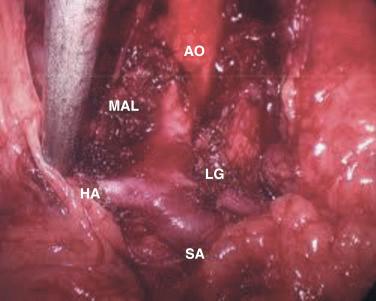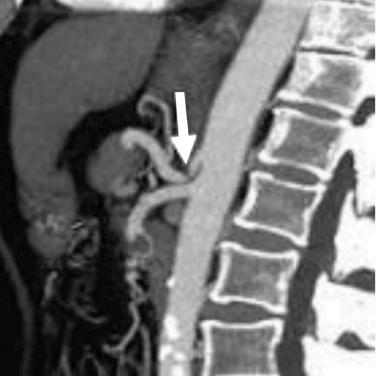Physical Address
304 North Cardinal St.
Dorchester Center, MA 02124
Vascular complications continue to be a major source of morbidity and mortality after orthotopic liver transplantation (OLT). Arterial complications of OLT threaten outcomes for patients and allografts. Hepatic arterial thrombosis (HAT) interrupts the allograft's blood supply and produces early graft loss, long-term dysfunction, or patient death, making these surgical complications life threatening. Considering the ongoing scarcity of hepatic allografts, vascular complications can have a profound impact on the application of OLT. Any strategies to prevent these technical complications, reduce graft loss, and decrease retransplantation will have far-reaching effects on the treatment of end-stage liver disease. Hepatic artery stenosis and HAT both carry high rates of morbidity and mortality. In addition, HAT is a major indication for retransplantation. HAT is the most common hepatic arterial complication and has been reported in 4% to 11% of adult transplants and 11% to 26% of pediatric transplants. Hepatic artery stenosis occurs in 5% to 13% of transplants. Hepatic artery aneurysm and hepatic artery rupture are rare vascular complication that can develop after OLT, with a reported incidence of 0.3% to 1.2%, but can be life threatening if not recognized and managed appropriately. This chapter will focus of the management of these arterial complications following liver transplantation.
Median arcuate ligament (MAL) syndrome results from luminal narrowing of the celiac artery by the insertion of the diaphragmatic muscle fibers or by fibrous bands of the celiac nervous plexus ( Fig. 77-1 ). In 10% to 50% of cases it is responsible for significant angiographic celiac trunk compression ( Fig. 77-2 ). In OLT the presence of celiac compression by MAL is considered to be a risk factor for HAT and may lead to graft loss. Compression of the celiac axis by the muscular fibers of the diaphragm results in a decrease in celiac artery blood flow. Under normal circumstances, collateral circulation via the superior mesenteric/pancreaticoduodenal system prevents the development of foregut ischemia. However, dissection with ligation of collateral flow in hepatic artery reconstruction during OLT may accentuate the effect of celiac axis compression, which would preclude adequate hepatic arterial flow. Arcuate ligament syndrome in association with OLT was first reported by the University of California at Los Angeles (UCLA) and Mount Sinai transplant centers in 1993. The incidence varied from 1.6% to 10%. Intraoperative measurement of donor hepatic arterial blood flow demonstrated a spectrum ranging from significant reduction to complete disruption of flow during the expiratory phase of the respiratory cycle. Paulsen and Klintmalm recorded the blood flow through the recipient hepatic artery during OLT. It was found to be 425.7 ± 25.6 mL/min. With the presence of celiac compression, hepatic artery blood flow decreased to values of 200 mL/min through expiration. Surgical division of the MAL resulted in relief of the compression with uniform and adequate blood flow as documented by the flowmeter recordings. In addition to surgical division of the MAL or reconstruction via aortoceliac grafting, retrograde transsplenic celiac dilation has been attempted by several authors, with varying degrees of success. More recently, preoperative endovascular stenting for recipient celiac trunk stenosis has been proposed before pancreaticoduodenectomy or after OLT. This radioguided interventional procedure may be an interesting approach for the preoperative management of MAL before OLT, but data are still rare in the literature. Although the clinical importance of the celiac compression syndrome is unclear in the general population, it is critical to recognize the existence of this type of obstruction in liver transplant patients. Proper surgical measures must be taken to restore adequate arterial blood supply to the liver to prevent potential graft loss.


The liver is unique in that it has a dual blood supply. Although any obstruction to the native liver's arterial flow is followed by development of collateral vessels, in the newly transplanted liver, attachments that might have served as collaterals have been divided. As a consequence the graft suffers an ischemic injury in the setting of acute HAT that can ultimately lead to loss of the allograft. In a small percentage of patients the clinical course of HAT is more benign. HAT is reported to complicate 4% to 15% of OLTs ( Table 77-1 ) and is generally more frequent after pediatric liver transplantation. Factors associated with HAT include dissection of the hepatic arterial wall, technical imperfections with the anastomosis, celiac stenosis or compression by the MAL, aberrant donor or recipient arterial anatomy, complex back-table arterial reconstruction of the allograft, and high-resistance microvascular arterial outflow caused by rejection or severe ischemia-reperfusion injury ( Table 77-2 ). Although advances in surgical technique have reduced the incidence of HAT, it still remains a serious threat to patient and graft survival. With the use of transarterial chemoembolization as treatment for hepatocellular carcinoma, the hepatic artery can be traumatized, resulting in increased periarterial inflammation, friability, and a predisposition to HAT. In 2002 a technique of early common hepatic arterial vascular occlusion was introduced at UCLA. This technique consisted of controlling the common hepatic artery with an atraumatic vascular clamp and ligating the gastroduodenal artery; after this was accomplished, the lobar hepatic arteries were occluded. It was hypothesized that early occlusion of the hepatic arterial inflow would decrease retrograde dissection of the hepatic artery. In addition, up to 20% of OLTs are now performed for hepatocellular carcinoma, a malignancy associated with a generalized hypercoagulable state.
| N | % | HAT | % | |
|---|---|---|---|---|
| Total transplant | 4234 | 203 | 5 | |
| Adult | 3368 | 80 | 134 | 3.9 |
| Pediatric | 866 | 20.5 | 69 | 7.9 |
| Technical | Medical |
|---|---|
| HA < 3 mm HA anastomosis other than common HA/branch patch Multiple anastomotic attempts Anomalous HA anatomy (donor or recipient) with reconstruction HA angulation Intimal flap Aggressive HA clamping |
Previous HAT Polycythemia/acquired or coagulable state ABO incompatibility Multiple ACR episodes CMV infection Hypotension/Vasopressors Infection |
Become a Clinical Tree membership for Full access and enjoy Unlimited articles
If you are a member. Log in here